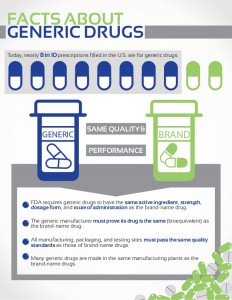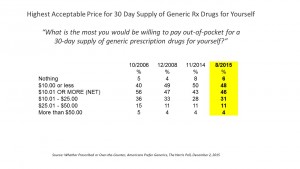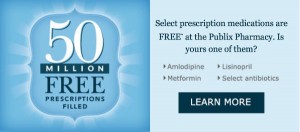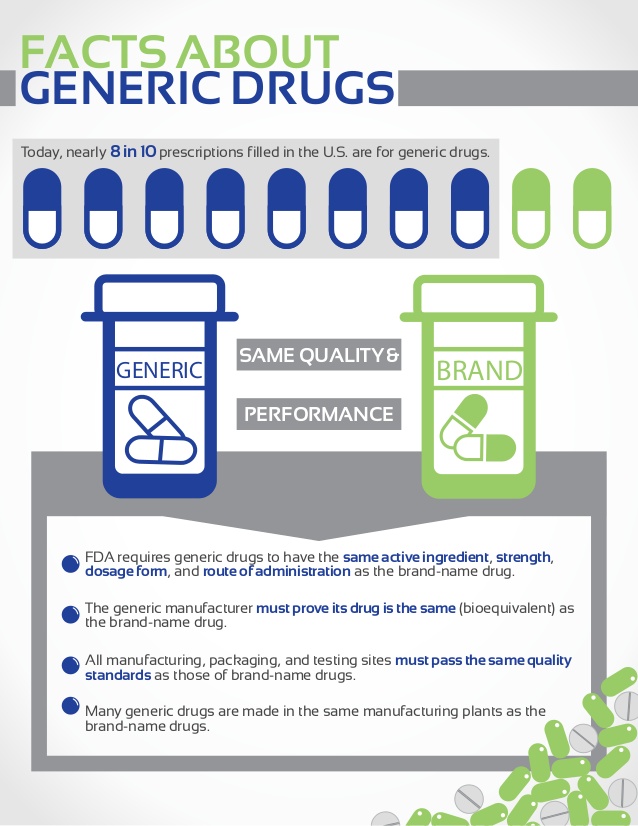
“What’s in a name?” Juliet asked in Shakespeare’s play. For medicines consumers in the U.S., not much. Most Americans prefer generics products, according to The Harris Poll’s survey.
7 in 10 U.S. adults choose generics over brands when given a choice. 3 in 10 people say they would “always” choose generics, whether a prescription drug or an over-the-counter product (store brand, private label).
While most people across all age groups would choose generics over brand ames for meds, parents with children in the households would more likely choose a brand name (36% with vs. 28% without kids). Still, 66% of parents fill generic prescriptions vs. 34% who go with brands.
More parents are also more willing to pay for brand-name drugs for their kids when they’re more expensive, versus for themselves.
People in urban areas are more likely to purchase brand-name drugs compared with suburban and rural dwellers: 56% of urban folks prefer brand-name meds vs. 26% suburban and 24% rural.
The favored retail channels for buying prescription drugs are chain pharmacies like CVS and Walgreens: 50% of consumers get Rx’s in chain drugstores. Discounters such as Target and Walmart (23%), supermarkets (18%), and mail order (16%) round out the retail channels for prescription drugs.
For OTCs, discount stores rank first above chain pharmacies, with 57% opting for Big Box discounters vs. 51%. Grocers rank third for OTCs with 32%.
The Harris Poll interviewed 2,255 U.S. adults in August 2015 for this survey.
 Health Populi’s Hot Points: Patients in the U.S. are exercising their healthcare consumer-muscles Pavlov’s Dog-style in response to generic drug prices vis-à-vis brand name medicines. Picking generics is a go-to tactic in the growing consumer-directed health plan world of high deductibles and health savings accounts, in which a growing number of health insurance members are enrolled.
Health Populi’s Hot Points: Patients in the U.S. are exercising their healthcare consumer-muscles Pavlov’s Dog-style in response to generic drug prices vis-à-vis brand name medicines. Picking generics is a go-to tactic in the growing consumer-directed health plan world of high deductibles and health savings accounts, in which a growing number of health insurance members are enrolled.
The table illustrates the trends for consumers’ perspectives on the price of generic drugs prescribed for them as patients. The highlighted column comes from the latest poll data. Note that 48% of consumers would be willing to pay $10 or less, and 6% “nothing” (that is, would like Rx drugs for free). See the trend for willing to pay $10 or more (NET) equaling 56% compared with 46% in 2015. That says that in 2006, nearly a decade ago, more patients were willing to spend more money on generic drugs than they are today.
A study from The Commonwealth Fund was published in November 2015, Tracking Trends in Health System Performance asking, “How High is America’s Health Care Cost Burden?” tracking health care affordability to July-August 2015. The top-line of the study is that 25% of people with private health insurance say it’s difficult or impossible to afford their health insurance premium, and 43% say it’s difficult or impossible to afford their deductible.
“If people believe that their deductibles or copayments are unaffordable, it will affect the way they make health care decisions,” this report concludes. Affordability is in the eye of the beholder. For 7 in 10 Americans, generics fit their personal definition.
 “Free” is also available from some retailers, such as the grocery chain Publix who announced just yesterday “free prescriptions” to boost adherence including 90-days of generic metformin (for diabetes), Lisinopril (an ACE inhibitor for heart conditions), and amlodipine (a calcium channel-blocker to treat high blood pressure and angina) to customers with a prescription. Publix had extended these meds for free for 30 days’ worth of supply. The company’s press release reads: “The Publix Pharmacy continues to enhance our free medications programs to best serve the needs of our customers,” stated Maria Brous, director media and community relations Publix. “With health care and prescription costs continuing to rise, medication adherence may prove challenging. The enhancement to our free prescription programs and pharmacy services allows our customers to focus on staying healthy and achieving their overall wellness goals.” The program reached 50 million Rx’s filled in April 2015. Health is where we live, work, play and shop…
“Free” is also available from some retailers, such as the grocery chain Publix who announced just yesterday “free prescriptions” to boost adherence including 90-days of generic metformin (for diabetes), Lisinopril (an ACE inhibitor for heart conditions), and amlodipine (a calcium channel-blocker to treat high blood pressure and angina) to customers with a prescription. Publix had extended these meds for free for 30 days’ worth of supply. The company’s press release reads: “The Publix Pharmacy continues to enhance our free medications programs to best serve the needs of our customers,” stated Maria Brous, director media and community relations Publix. “With health care and prescription costs continuing to rise, medication adherence may prove challenging. The enhancement to our free prescription programs and pharmacy services allows our customers to focus on staying healthy and achieving their overall wellness goals.” The program reached 50 million Rx’s filled in April 2015. Health is where we live, work, play and shop…





 I'm in amazing company here with other #digitalhealth innovators, thinkers and doers. Thank you to Cristian Cortez Fernandez and Zallud for this recognition; I'm grateful.
I'm in amazing company here with other #digitalhealth innovators, thinkers and doers. Thank you to Cristian Cortez Fernandez and Zallud for this recognition; I'm grateful. Jane was named as a member of the AHIP 2024 Advisory Board, joining some valued colleagues to prepare for the challenges and opportunities facing health plans, systems, and other industry stakeholders.
Jane was named as a member of the AHIP 2024 Advisory Board, joining some valued colleagues to prepare for the challenges and opportunities facing health plans, systems, and other industry stakeholders.  Join Jane at AHIP's annual meeting in Las Vegas: I'll be speaking, moderating a panel, and providing thought leadership on health consumers and bolstering equity, empowerment, and self-care.
Join Jane at AHIP's annual meeting in Las Vegas: I'll be speaking, moderating a panel, and providing thought leadership on health consumers and bolstering equity, empowerment, and self-care.